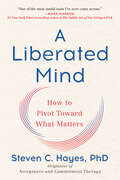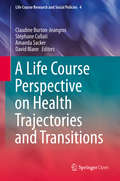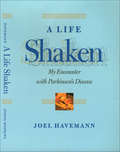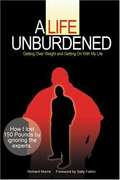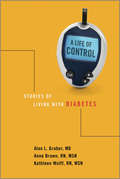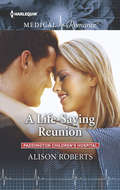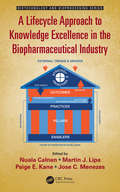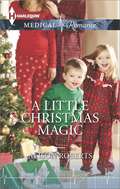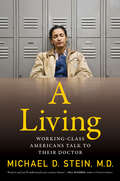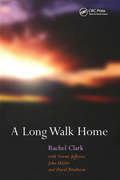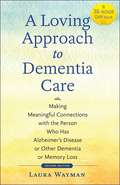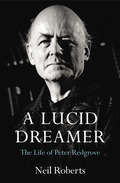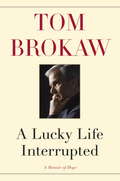- Table View
- List View
A Liberated Mind: How to Pivot Toward What Matters
by Steven C. Hayes"In all my years studying personal growth, Acceptance and Commitment Therapy is one of the most useful tools I've ever come across, and in this book, Dr. Hayes describes it with more depth and clarity than ever before."-Mark Manson, #1 New York Times best-selling author of The Subtle Art of Not Giving a F*ckLife is not a problem to be solved. ACT shows how we can live full and meaningful lives by embracing our vulnerability and turning toward what hurts.In this landmark book, the originator and pioneering researcher into Acceptance and Commitment Therapy (ACT) lays out the psychological flexibility skills that make it one of the most powerful approaches research has yet to offer. These skills have been shown to help even where other approaches have failed. Science shows that they are useful in virtually every area--mental health (anxiety, depression, substance abuse, eating disorders, PTSD); physical health (chronic pain, dealing with diabetes, facing cancer); social processes (relationship issues, prejudice, stigma, domestic violence); and performance (sports, business, diet, exercise).How does psychological flexibility help? We struggle because the problem-solving mind tells us to run from what causes us fear and hurt. But we hurt where we care. If we run from a sense of vulnerability, we must also run from what we care about. By learning how to liberate ourselves, we can live with meaning and purpose, along with our pain when there is pain.Although that is a simple idea, it resists our instincts and programming. The flexibility skills counter those ingrained tendencies. They include noticing our thoughts with curiosity, opening to our emotions, attending to what is in the present, learning the art of perspective taking, discovering our deepest values, and building habits based around what we deeply want.Beginning with the epiphany Steven Hayes had during a panic attack, this book is a powerful narrative of scientific discovery filled with moving stories as well as advice for how we can put flexibility skills to work immediately. Hayes shows how allowing ourselves to feel fully and think freely moves us toward commitment to what truly matters to us. Finally, we can live lives that reflect the qualities we choose.
A Lie For A Lie: A completely riveting psychological thriller, for fans of Big Little Lies and The Rumour
by Julie Corbin*The next gripping suspense thriller from Julie Corbin, Whispers of a Scandal, is available to pre-order now!*Teacher versus pupil.It's your word against hers . . .As a school nurse, Anna Pierce is a well-respected and trusted member of the community. So when she is accused of hitting a pupil, the reaction is one of shock and disbelief.The pupil is Tori Carmichael - Anna's mentee and a troubled child known for bending the truth.With her career and reputation on the line, Anna is determined to clear her name. But before she can, the worst happens: Tori is found dead.Suspicion mounts against Anna, who says she didn't do it.But if she isn't the killer, there is someone out there who is . . .Delivering a dark and twisting plot and asking the reader 'What would you do?', this is gripping suspense for fans of Big Little Lies and The Rumour.Readers are gripped by A Lie For A Lie'Full of secrets, twists, and unexpected answers. I was hooked.''Absolutely amazing book! It was the perfect thriller!''I cannot recommend it highly enough - a fabulous read.''An extremely well written, utterly riveting thriller that had me totally captivated from the very first page.'A gripping tale of deception, manipulation and judgements that keeps the reader guessing and frantically turning the pages.''Julie Corbin works her magic . . . I was gripped by every single page.''I'll definitely be recommending it to my other book lover friends. Can't wait to read more by Julie Corbin!''A gripping story from the very beginning. Julie Corbin is a new author to add to my "favourite authors" list.'
A Lie For A Lie: A completely riveting psychological thriller, for fans of Big Little Lies and The Rumour
by Julie Corbin*The next gripping suspense thriller from Julie Corbin, Whispers of a Scandal, is available to pre-order now!*Teacher versus pupil.It's your word against hers . . .As a school nurse, Anna Pierce is a well-respected and trusted member of the community. So when she is accused of hitting a pupil, the reaction is one of shock and disbelief.The pupil is Tori Carmichael - Anna's mentee and a troubled child known for bending the truth.With her career and reputation on the line, Anna is determined to clear her name. But before she can, the worst happens: Tori is found dead.Suspicion mounts against Anna, who says she didn't do it.But if she isn't the killer, there is someone out there who is . . .Delivering a dark and twisting plot and asking the reader 'What would you do?', this is gripping suspense for fans of Big Little Lies and The Rumour.Readers are gripped by A Lie For A Lie'Full of secrets, twists, and unexpected answers. I was hooked.''Absolutely amazing book! It was the perfect thriller!''I cannot recommend it highly enough - a fabulous read.''An extremely well written, utterly riveting thriller that had me totally captivated from the very first page.'A gripping tale of deception, manipulation and judgements that keeps the reader guessing and frantically turning the pages.''Julie Corbin works her magic . . . I was gripped by every single page.''I'll definitely be recommending it to my other book lover friends. Can't wait to read more by Julie Corbin!''A gripping story from the very beginning. Julie Corbin is a new author to add to my "favourite authors" list.'
A Lie For A Lie: A completely riveting psychological thriller, for fans of Big Little Lies and The Rumour
by Julie CorbinWhat is the worst lie you've ever told?School nurse Anna Pierce has been accused of hitting a pupil.Tori Carmichael is the girl accusing her.One of them is lying.But why?*******What readers are saying about Julie Corbin'It's dark, its obsessive, it's compelling...this author really knows how to work her audience.''I'll definitely be recommending it to my other book lover friends. Can't wait to read more by Julie Corbin!''A gripping story from the very beginning. Julie Corbin is a new author to add to my "favourite authors" list'(P) 2020 Hodder & Stoughton Ltd
A Life Course Perspective on Health Trajectories and Transitions (Life Course Research and Social Policies #4)
by Claudine Burton-Jeangros Stéphane Cullati Amanda Sacker David BlaneThis book examines health trajectories and health transitions at different stages of the life course, including childhood, adulthood and later life. It provides findings that assess the role of biological and social transitions on health status over time. The essays examine a wide range of health issues, including the consequences of military service on body mass index, childhood obesity and cardiovascular health, socio-economic inequalities in preventive health care use, depression and anxiety during the child rearing period, health trajectories and transitions in people with cystic fibrosis and oral health over the life course. The book addresses theoretical, empirical and methodological issues as well as examines different national contexts, which help to identify factors of vulnerability and potential resources that support resilience available for specific groups and/or populations. Health reflects the ability of individuals to adapt to their social environment. This book analyzes health as a dynamic experience. It examines how different aspects of individual health unfold over time as a result of aging but also in relation to changing socioeconomic conditions. It also offers readers potential insights into public policies that affect the health status of a population.
A Life Everlasting: The Extraordinary Story of One Boy's Gift to Medical Science
by Sarah GrayA donor mother’s powerful memoir of grief and rebirth that is also a fascinating medical science whodunit, taking us inside the world of organ, eye, tissue, and blood donation and cutting-edge scientific research.When Sarah Gray received the devastating news that her unborn son Thomas was diagnosed with anencephaly, a terminal condition, she decided she wanted his death—and life—to have meaning. In the weeks before she gave birth to her twin sons in 2010, she arranged to donate Thomas’s organs. Due to his low birth weight, they would go to research rather than transplant. As transplant donors have the opportunity to meet recipients, Sarah wanted to know how Thomas's donation would be used.That curiosity fueled a scientific odyssey that leads Sarah to some of the most prestigious scientific facilities in the country, including Harvard, Duke, and the University of Pennsylvania. Pulling back the curtain of protocol and confidentiality, she introduces the researchers who received Thomas’s donations, held his liver in their hands, studied his cells under the microscope. Sarah’s journey to find solace and understanding takes her beyond her son’s donations—offering a breathtaking overview of the world of medical research and the valiant scientists on the horizon of discovery. She goes behind the scenes at organ procurement organizations, introducing skilled technicians for whom death means saving lives, empathetic counselors, and the brilliant minds who are finding surprising and inventive ways to treat and cure disease through these donations. She also shares the moving stories of other donor families.A Life Everlasting is an unforgettable testament to hope, a tribute to life and discovery, and a portrait of unsung heroes pushing the boundaries of medical science for the benefit of all humanity.
A Life Shaken: My Encounter with Parkinson's Disease
by Joel Havemann"I'm flat on my back on a couch that's too short in a windowless room in the bureau. I can't even sit at a computer, much less make a keyboard work. My arms and legs are shaking uncontrollably. Although I am only 53 years old, I have already been struggling with Parkinson's disease for seven years. And right now the disease is winning." So begins Joel Havemann's account of the insidious disease that is Parkinson's. Into his own story, Havemann weaves accessible explanations of how Parkinson's disrupts the brain's circuitry, how symptoms are managed through drugs and surgery, and how people cope with the disease's psychological challenges. The updated paperback edition brings the discussion of treatment options and research thoroughly up to date.
A Life That Matters
by Kenneth E. SalyerA LIFE THAT MATTERS is a fascinating and profoundly moving new book by a surgeon who has devoted his life to helping the world's most unfortunate children grow up with faces that allow them to know they are part of the human community-assured that they are ordinary in the very best way and fully capable of being loved. We present ourselves to the world foremost with our faces, Dr. Ken Salyer explains, and the people we meet initially look to our faces to ascertain who, in fact, we are. Dr. Salyer is a fiercely intelligent, energetic, insatiably inquiring, and deeply compassionate man whose life has been one of service. As he writes in his introduction to A LIFE THAT MATTERS, he is "convinced that possessing a face you aren't forced to hide is a fundamental human right-as important to a fully lived life as freedom from fear or want." And in clinics and operating room around the world, today Dr. Salyer continues a groundbreaking forty-year career whose nexus melds cutting-edge medicine with humanitarian aid offered to profoundly unfortunate children.A LIFE THAT MATTERS focuses on the moving stories of the children whose lives have been transformed and their moving personal testaments to how precious their "normalcy" now is. It is these children who inspired Dr. Salyer to found the World Craniofacial Foundation and establish clinics across the globe that now offer hope for good lives to hundreds of poor children in still-developing countries who otherwise would be shunned, locked away, or abandoned. In a voice that's compelling, eloquent, and always impassioned, he issues a call for a new worldwide understanding of the rights of the terribly disfigured, and he encourages readers to be inspired by the lives of these children and to transform our own challenges into triumphs.
A Life Unburdened: Getting Over Weight and Getting On with My Life
by Richard MorrisA Life Unburdened chronicles the amazing transformation of Richard Morris, whose life of personal and public pain--a life burdened by more than 400 pounds--undergoes an amazing transformation as Richard discovers the redemptive power of traditional foods. Along with his Ten Steps for Success, Richard explains how the Total Food Index (FTI) can help you win the war against overweight and poor health.
A Life Worth Living: A Doctor's Reflections on Illness in a High-Tech Era
by Robert MartensenCritical illness is a fact of life. Even those of us who enjoy decades of good health are touched by it eventually, either in our own lives or in those of our loved ones. And when this happens, we grapple with serious and often confusing choices about how best to live with our afflictions. A Life Worth Living is a book for people facing these difficult decisions. Robert Martensen, a physician, historian, and ethicist, draws on decades of experience with patients and friends to explore the life cycle of serious illness, from diagnosis to end of life. He connects personal stories with reflections upon mortality, human agency, and the value of "cutting-edge" technology in caring for the critically ill. Timely questions emerge: To what extent should efforts to extend human life be made? What is the value of nontraditional medical treatment? How has the American health-care system affected treatment of the critically ill? And finally, what are our doctors' responsibilities to us as patients, and where do those responsibilities end? Using poignant case studies, Martensen demonstrates how we and our loved ones can maintain dignity and resilience in the face of life's most daunting circumstances.
A Life after Deafness
by George B. JoslinNovel about a deaf woman escaping from her domineering parents and finding love, marriage, and parenthood.
A Life of Control: Stories of Living with Diabetes
by Alan L. Graber Anne W. Brown Kathleen WolffDiabetes happens in a life that already has a story. This book, composed of nearly forty personal narratives, based on taped interviews, about the lives of actual patients with diabetes, draws upon the collective experience of an endocrinologist and two nurse practitioners who worked together for twenty-five years. The people who describe their experiences with diabetes range from teenagers to physicians, immigrants, athletes, pregnant women, accountants, a prisoner, and a dairy farmer. They speak of the variety of ways they handle monitoring, diet, insurance coverage, sports, and fashion. Some talk of how they manage to drive trucks for a living or, for recreation, fly airplanes or go spelunking. Many speak frankly of their anxieties and frustrations.The authors acknowledge that both the patient and clinician have a story about their relationship, and describe the richness and tension in their interaction. Families, too, are sources of both support and conflict. These relationships are acknowledged in the organization of the book, which is divided into sections defined by the main elements of diabetes control: patient self-determination, the role of the family, the social situation, and the patient-clinician encounter.The book provides a wealth of information about diabetes, including material on prevention, complications, and new technology, as well as a superb glossary, but it is not intended as a textbook on diabetes or as a self-care manual for patients. Rather the book provides a textured account of the health professional's view of diabetes control and the perspective of the patient whose life is complicated by diabetes.
A Life of Control: Stories of Living with Diabetes
by Alan L. Graber Anne W. Brown Kathleen WolffDiabetes happens in a life that already has a story. This book, composed of nearly forty personal narratives, based on taped interviews, about the lives of actual patients with diabetes, draws upon the collective experience of an endocrinologist and two nurse practitioners who worked together for twenty-five years. The people who describe their experiences with diabetes range from teenagers to physicians, immigrants, athletes, pregnant women, accountants, a prisoner, and a dairy farmer. They speak of the variety of ways they handle monitoring, diet, insurance coverage, sports, and fashion. Some talk of how they manage to drive trucks for a living or, for recreation, fly airplanes or go spelunking. Many speak frankly of their anxieties and frustrations. The authors acknowledge that both the patient and clinician have a story about their relationship, and describe the richness and tension in their interaction. Families, too, are sources of both support and conflict. These relationships are acknowledged in the organization of the book, which is divided into sections defined by the main elements of diabetes control: patient self-determination, the role of the family, the social situation, and the patient-clinician encounter. The book provides a wealth of information about diabetes, including material on prevention, complications, and new technology, as well as a superb glossary, but it is not intended as a textbook on diabetes or as a self-care manual for patients. Rather the book provides a textured account of the health professional's view of diabetes control and the perspective of the patient whose life is complicated by diabetes.
A Life of Worry: Politics, Mental Health, and Vietnam’s Age of Anxiety (Ethnographic Studies in Subjectivity #17)
by Allen L TranA free ebook version of this title is available through Luminos, University of California Press’s Open Access publishing program. Visit www.luminosoa.org to learn more. Who, what, and how we fear reflects who we are. In less than half a century, people in Vietnam have gone from fearing bombing raids, political persecution, and starvation to worrying about decisions over the best career path or cell phone plan. This shift in the landscape of people’s anxieties is the result of economic policies that made Vietnam the second-fastest-growing economy in the world and a triumph of late capitalist development. Yet as much as people marvel at the speed of progress, all this change can be difficult to handle. A Life of Worry unpacks an ethnographic puzzle. What accounts for the simultaneous rise of economic prosperity and anxiety among Ho Chi Minh City’s middle class? The social context of anxiety in Vietnam is layered within the development of advanced capitalism, the history of the medical and psychological sciences, and new ways of drawing the line between self and society. At a time when people around the world are turning to the pharmaceutical and wellness industries to soothe their troubled minds, it is worth considering the social and political dynamics that make the promises of these industries so appealing.
A Life-Centered Approach to Bioethics
by Lawrence E. JohnsonApproaches bioethics on the basis of a conception of life and what is needed for the affirmation of its quality in the most encompassing sense. Johnson applies this conception to discussions of controversial issues in bioethics including euthanasia, abortion, cloning and genetic engineering. His emphasis is not on providing definitive solutions to all bioethical issues but on developing an approach to coping with them that can also help us deal with new issues as they emerge. The foundation of this discussion is an extensive examination of the nature of the self and its good and of various approaches to ethics. His bioethic is integrally related to his well-known work on environmental philosophy. The book also applies these principles on an individual level, offering a user-friendly discussion of how to deal with ethical slippery slopes and how and where to draw the line when dealing with difficult questions of bioethics.
A Life-Saving Reunion
by Alison RobertsA love worth fighting for... Cardiologist Thomas Wolfe's specialty is mending broken hearts, but no one knows how much his own still hurts five years on... Torn apart by the sadness of losing their little girl, Tom and his ex-wife, transplant surgeon Rebecca Scott, are virtually strangers, until they're thrown together again at Paddington's to save the life of another very special little girl. Can a miracle surgery prove that it's never too late to give love a second chance?
A Lifecycle Approach to Knowledge Excellence in the Biopharmaceutical Industry (Biotechnology and Bioprocessing)
by Nuala Calnan Martin J Lipa Paige E. Kane Jose C. MenezesThis book addresses the rapidly emerging field of Knowledge Management in the pharmaceutical, medical devices and medical diagnostics industries. In particular, it explores the role that Knowledge Management can play in ensuring the delivery of safe and effective products to patients. The book also provides good practice examples of how the effective use of an organisation’s knowledge assets can provide a path towards business excellence.
A Little Christmas Magic
by Alison RobertsOne very special Christmas... Christmas with a single dad and his five-year-old twins is just what nanny Emma Sinclair needs to help her recover from chemo. But for her brooding boss, Dr. Adam McAllister, the festive season is one he'd rather forget. Emma is determined to give the children their first real Christmas, and as she works her magic Adam can't help being captivated. As one passionate mistletoe kiss leads to another Emma begins to believe that Christmas really is a time for healing. Does she dare even dream of a future-together?
A Living: Working-Class Americans Talk to Their Doctor
by Michael D. SteinFrom a leading public health expert and physician, and in the style of Studs Terkel's Working, comes an eye-opening look at what it&’s like to have to work physically hard for your money in America . . .A Living is a vivid portrait of the working lives of the patients who visit Dr. Michael Stein, a primary care doctor in urban America. What makes his patients unique is that they, by and large, do demanding manual labor. Very few have the luxury of working remotely, or seated. Inspired by Studs Terkel&’s classic Working, Stein produces an eye-opening look at what it&’s like to have to work long hours at physical jobs for a paycheck in America. A Living is composed of vignettes, snap shots of people&’s working lives, the dramas, disappointments and frustrations workers have with their colleagues, family co-workers, and supervisors.And yet it also captures the sense of accomplishment and satisfaction, the opportunities for initiative and self-expression that come from doing intricate work with one&’s hands. Work gives Stein&’s patients a sense of identity and a social environment to thrive in.Ultimately, A Living is an extraordinarily powerful and poetic tableaux of working-class America at this moment when manual labor may be the final refuge in the new era of AI.
A Long Walk Home
by Rachel ClarkA Long Walk Home is Rachel Clark’s evocative and moving account of her treatment and experiences with health professionals in Britain and Australia while she was living with, and dying from, cancer. It includes an Epilogue by her twin sister Naomi Jefferies, and learning points for health professionals by John Hasler and David Pendleton.
A Look Back: The Birth of the Americans with Disabilities Act
by Robert C Anderson”One of my proudest moments as President occurred on July 26, 1990--the day I signed the Americans with Disabilities Act into law. With its passage, a shameful wall of exclusion came tumbling down. This landmark legislation was the culmination of the dedicated efforts of so many, and I salute the bipartisan leadership of the Congress--as well as the countless advocates from all parts of society who contributed to our success. It was a team effort. With the ADA, our country took a dramatic step toward eliminating the physical barriers that existed and the social barriers that were accepted. Much work lies ahead, but I am confident that we will finish the wonderful work already begun. After all, it’s the right thing to do.” --Former President George BushIn 1990, despite resistance from the business sector and state and local governments, disability groups and activists, together with responsive government leaders, succeeded in passing the most significant civil rights bill in decades. A Look Back: The Birth of the Americans with Disabilities Act takes you to the unique moment in American history when persons of many different backgrounds and with different disabilities united to press Congress for full recognition and protection of their rights as American citizens. The ADA recalls the promise of earlier civil rights legislation and advocacy. A Look Back will remind you that people are people before they are disabled and that they deserve to be acknowledged as individuals, rather than stereotyped on the basis of their physical conditions. You’ll witness this firsthand through the inspirational example the Reverend Harold Wilke has set through his own personal struggles, triumphs, and ministry. A witness to the signing of the ADA on the lawn of the White House, he played a key role as a vocal activist in the transformation of self-image for persons with disabilities and in the fight for this bill.In this book, you will see the progress that has been made since the ADA was passed and that, despite the headway made for empowering persons with disabilities, there is much to be done before all individuals are aware of their rights, responsibilities, and protection under the ADA. A Look Back contends that through public education, pastoral care, and open, sensitive congregations, bridges can be built between religion, secular society, and persons with disabilities. This will result in persons with disabilities becoming full participants in daily American life.
A Love Against All Odds
by Emily ForbesOne life-changing moment... Three years ago, Dr. Henry Cavanaugh walked out of nurse Maia Tahana's life, unable to allow himself a happy future after his family lost their lives. But now he's back-and working in her emergency department! Worse still, he's more irresistible than ever... Henry might have sworn off love, but when a powerful earthquake hits Christchurch he's faced with a prospect he can't bear...losing Maia forever. Now he has to fight with everything he has to win her back for good!
A Loving Approach to Dementia Care: Making Meaningful Connections with the Person Who has Alzheimer's Disease or Other Dementia or Memory Loss (A 36-hour Day Book)
by Laura WaymanBack Cover: "A Loving Approach to Dementia Care offers compassionate advice on overcoming practical and emotional obstacles to maintaining meaningful relationships with loved ones who have dementia and memory loss. Laura Wayman's program of care emphasizes communication, affirmative response, and empowerment--transforming the caregiving process from a burden into a fulfilling journey. Her true stories of caregiving illustrate the principles of this loving approach, giving readers essential tools for connecting with people who have dementia. In this thoroughly revised edition, dementia care consultant Wayman adds fresh caregiving insights and new information about the dangers of denying the onset of cognitive problems. Also new to this edition is Wayman's ‘Dementia-Aware Guide to Caregiving’--a quick reference tool for advice on how to respond to specific difficult behaviors."
A Lucid Dreamer: The Life of Peter Redgrove
by Peter Redgrove Dr Neil RobertsThe work of the poet Peter Redgrove is one of the great unexplored treasures of late twentieth century literature. His prolific output presents an intriguing variety of personae: magician, scientist, lover, psychologist, joker, madman. It is only now, with the publication of his Collected Poems and this biography, that we can see how and why these personae developed - and discover the full depth and range of this visionary writer.Born into an apparently conventional middle-class family that was in reality deeply disturbed, the poet finally emerged: transforming himself from the neurotic, Oedipal young scientist, through a process of mental breakdown, insulin coma therapy, erotic revelation and the discovery of poetic companionship at Cambridge - and particularly his friendship and rivalry with Ted Hughes.Neil Roberts explores the inner story of this emergence, and Redgrove's later development through marriage, family life, the fellowship of the 'Group', alcoholic excess, infidelity and marital breakdown to his triumphant later partnership with Penelope Shuttle. We also discover, for the first time, some darker secrets: his fascination with Aleister Crowley, his damaged and damaging relationship with his father, and the lifelong sexual fetish which he called the 'Game'. Drawing on the poet's intimate journals and correspondence, and interviews with family, friends and colleagues, A Lucid Dreamer tells the exceptionally inward and revealing story of an astonishing creative life.
A Lucky Life Interrupted
by Tom BrokawFrom Tom Brokaw, the bestselling author of The Greatest Generation, comes a powerful memoir of a year of dramatic change--a year spent battling cancer and reflecting on a long, happy, and lucky life. Tom Brokaw has led a fortunate life, with a strong marriage and family, many friends, and a brilliant journalism career culminating in his twenty-two years as anchor of the NBC Nightly News and as bestselling author. But in the summer of 2013, when back pain led him to the doctors at the Mayo Clinic, his run of good luck was interrupted. He received shocking news: He had multiple myeloma, a treatable but incurable blood cancer. Friends had always referred to Brokaw's "lucky star," but as he writes in this inspiring memoir, "Turns out that star has a dimmer switch." Brokaw takes us through all the seasons and stages of this surprising year, the emotions, discoveries, setbacks, and struggles--times of denial, acceptance, turning points, and courage. After his diagnosis, Brokaw began to keep a journal, approaching this new stage of his life in a familiar role: as a journalist, determined to learn as much as he could about his condition, to report the story, and help others facing similar battles. That journal became the basis of this wonderfully written memoir, the story of a man coming to terms with his own mortality, contemplating what means the most to him now, and reflecting on what has meant the most to him throughout his life. Brokaw also pauses to look back on some of the important moments in his career: memories of Nelson Mandela, the Dalai Lama, the fall of the Berlin Wall, the morning of September 11, 2001, in New York City, and more. Through it all, Brokaw writes in the warm, intimate, natural voice of one of America's most beloved journalists, giving us Brokaw on Brokaw, and bringing us with him as he navigates pain, procedures, drug regimens, and physical rehabilitation. Brokaw also writes about the importance of patients taking an active role in their own treatment, and of the vital role of caretakers and coordinated care. Generous, informative, and deeply human, A Lucky Life Interrupted offers a message of understanding and empowerment, resolve and reality, hope for the future and gratitude for a well-lived life.From the Hardcover edition.
